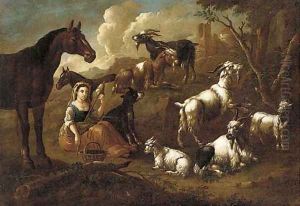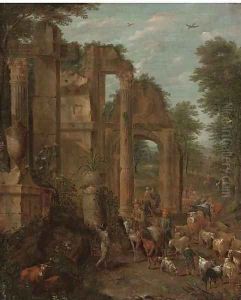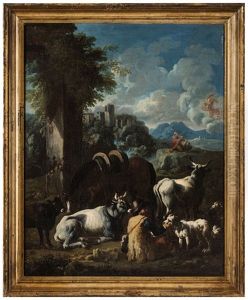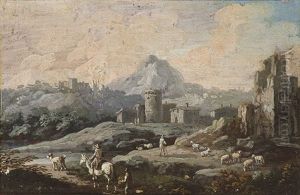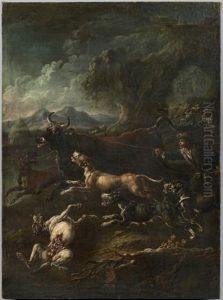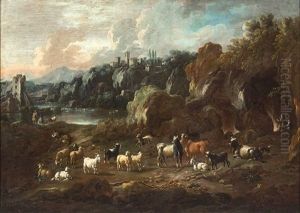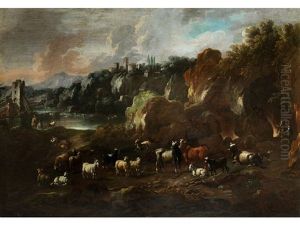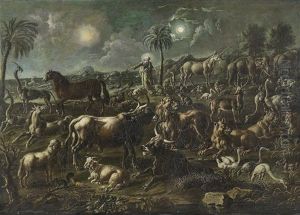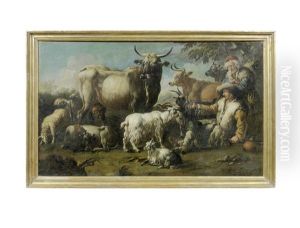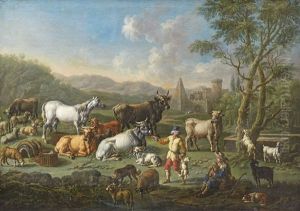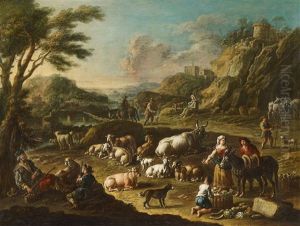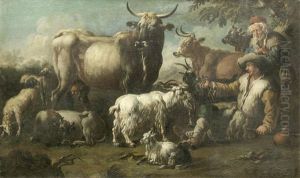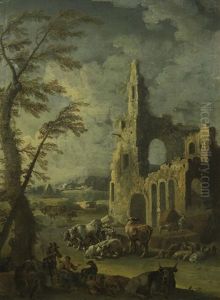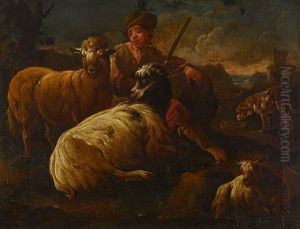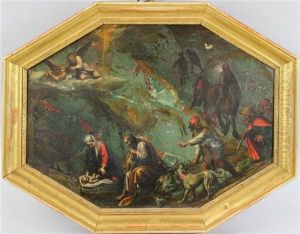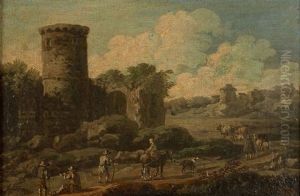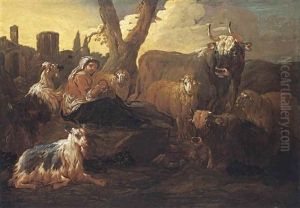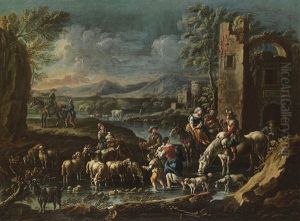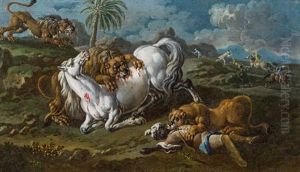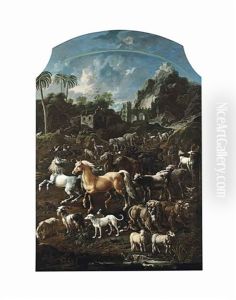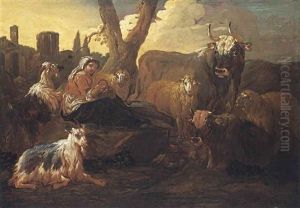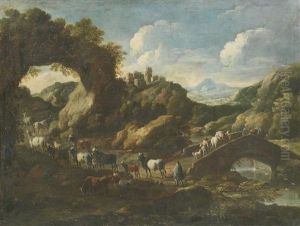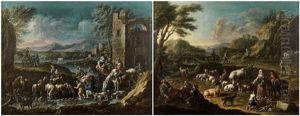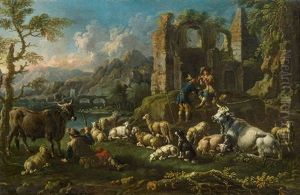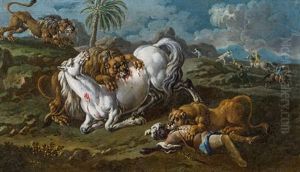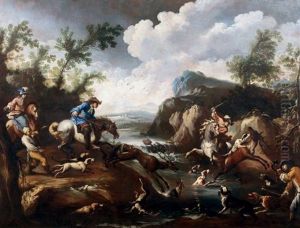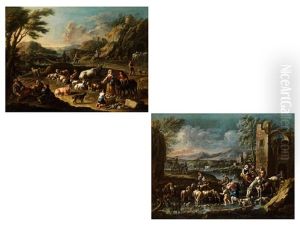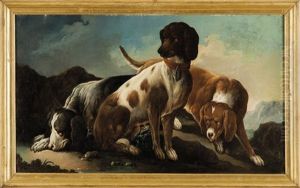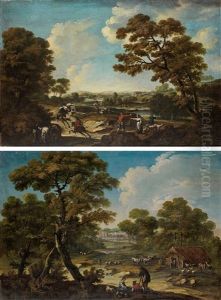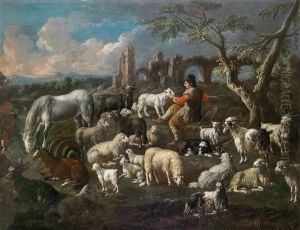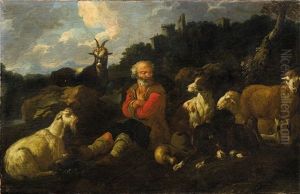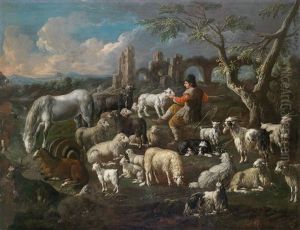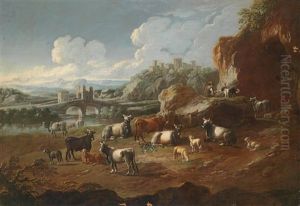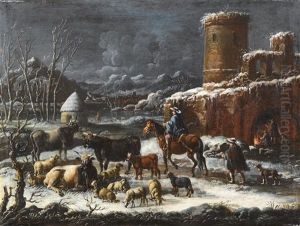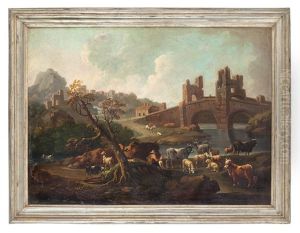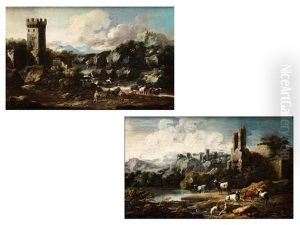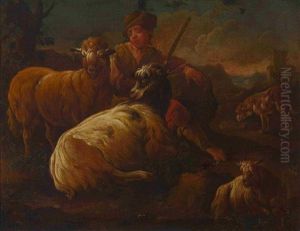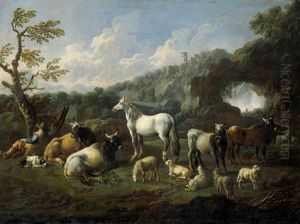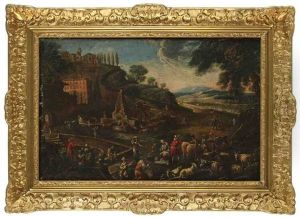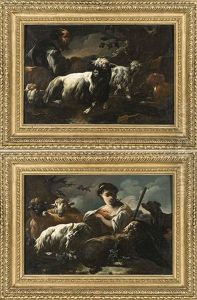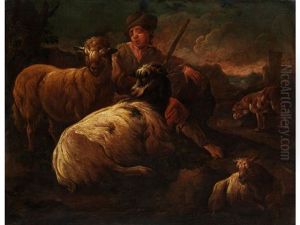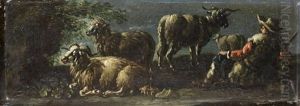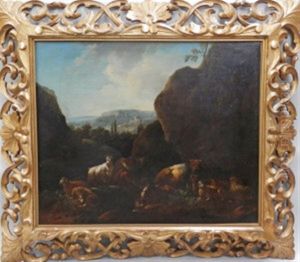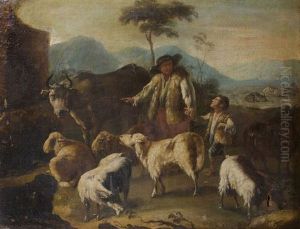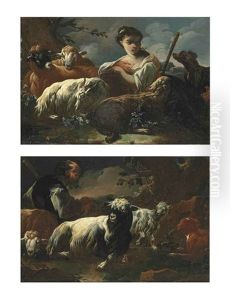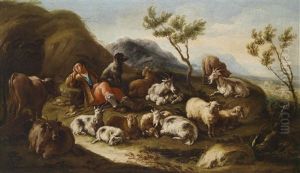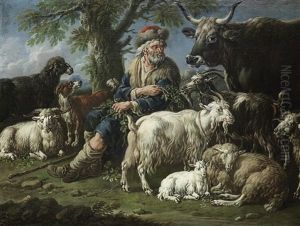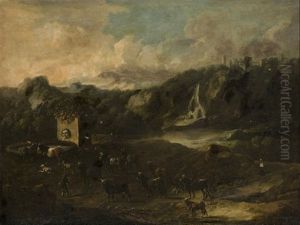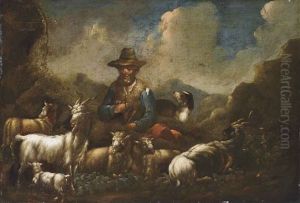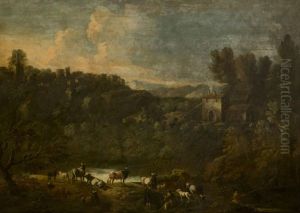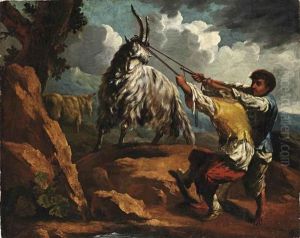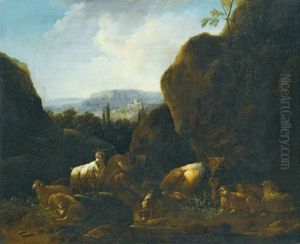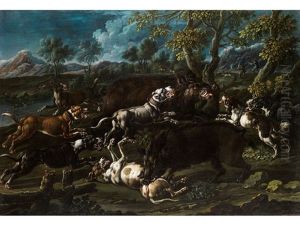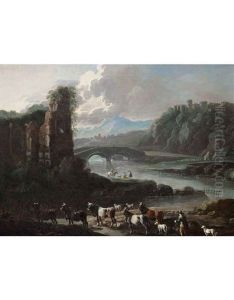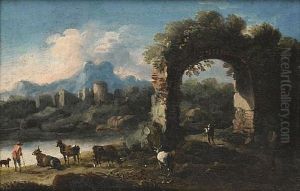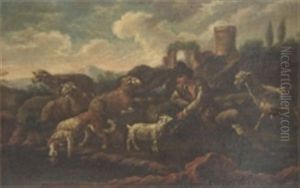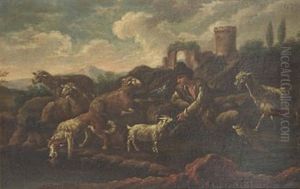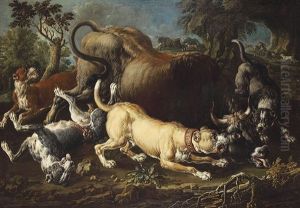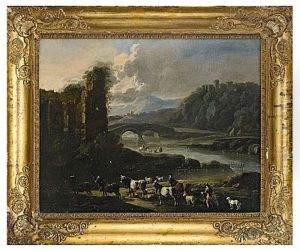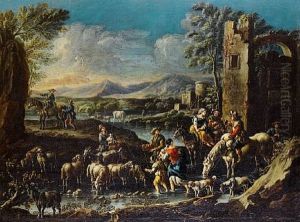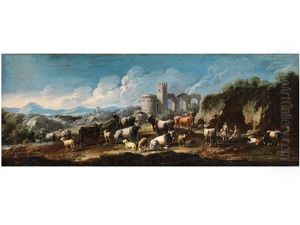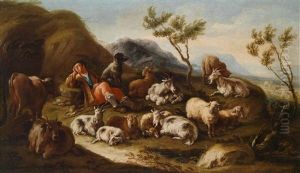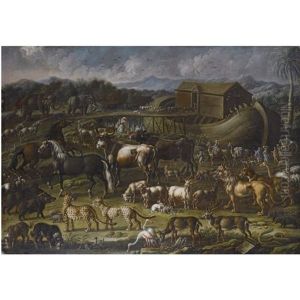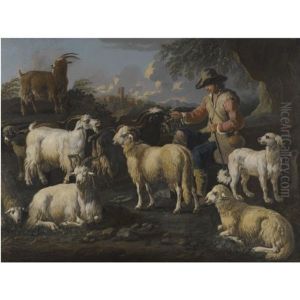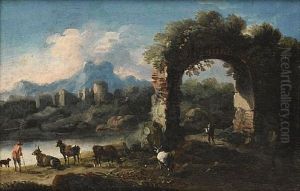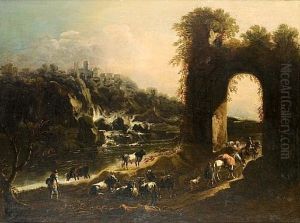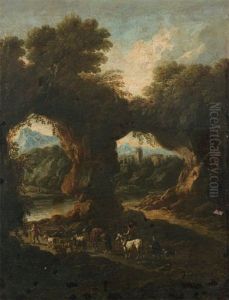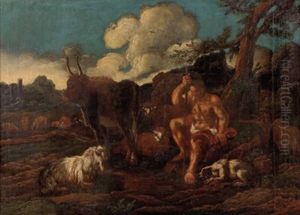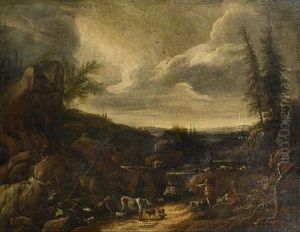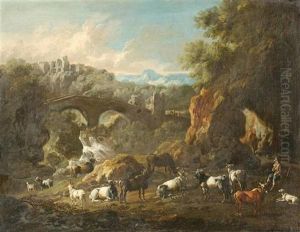Cajetan Roos Paintings
Cajetan Roos, also known as Gaetano de Rosa or Gaetano Rosa, was an Italian painter born in 1690 in the Principality of Piombino, Italy. He was part of a family of artists, with his father, Philipp Peter Roos (also known as Rosa da Tivoli), being a well-regarded painter of animals and landscapes. The artistic lineage extended through his brothers, with Johann Heinrich Roos and Theodor Roos also achieving recognition for their work. Cajetan's style was heavily influenced by his family's artistic tradition, particularly the pastoral and animal subjects that his father excelled in.
Roos is best known for his landscapes and scenes featuring animals, which were executed with a naturalistic detail and a sensitivity to the atmospheric conditions of the Italian countryside. He was adept in capturing the serene beauty of the landscape and the pastoral life, blending it with a realistic portrayal of animals, a skill that was highly appreciated in his time. His works often depicted the harmonious coexistence of humans and animals within nature, reflecting the 18th-century fascination with the idyllic and the bucolic.
Throughout his career, Cajetan Roos developed a distinctive style that, while drawing from his family's artistic roots, also incorporated influences from the broader Italian landscape tradition. His ability to convey the delicate interplay of light and shadow, combined with a refined use of color, contributed to the enduring appeal of his paintings. Roos's work was not only appreciated in Italy but also garnered attention and patronage across Europe, particularly in Germany and Austria, where his pastoral scenes resonated with local tastes and aesthetics.
Despite his success, detailed records of Roos's life are sparse, and much of what is known about him comes from the analysis of his surviving works and their influence on contemporaneous artists. After a long career, Cajetan Roos died in 1770. His legacy is preserved in the collections of several European museums, where his paintings continue to be admired for their contribution to the Italian landscape and animal painting tradition of the 18th century. Roos's work represents a crucial link in the chain of European art history, bridging the baroque sensibilities of his forebears with the emerging rococo and neoclassical styles that would dominate the late 18th and early 19th centuries.
